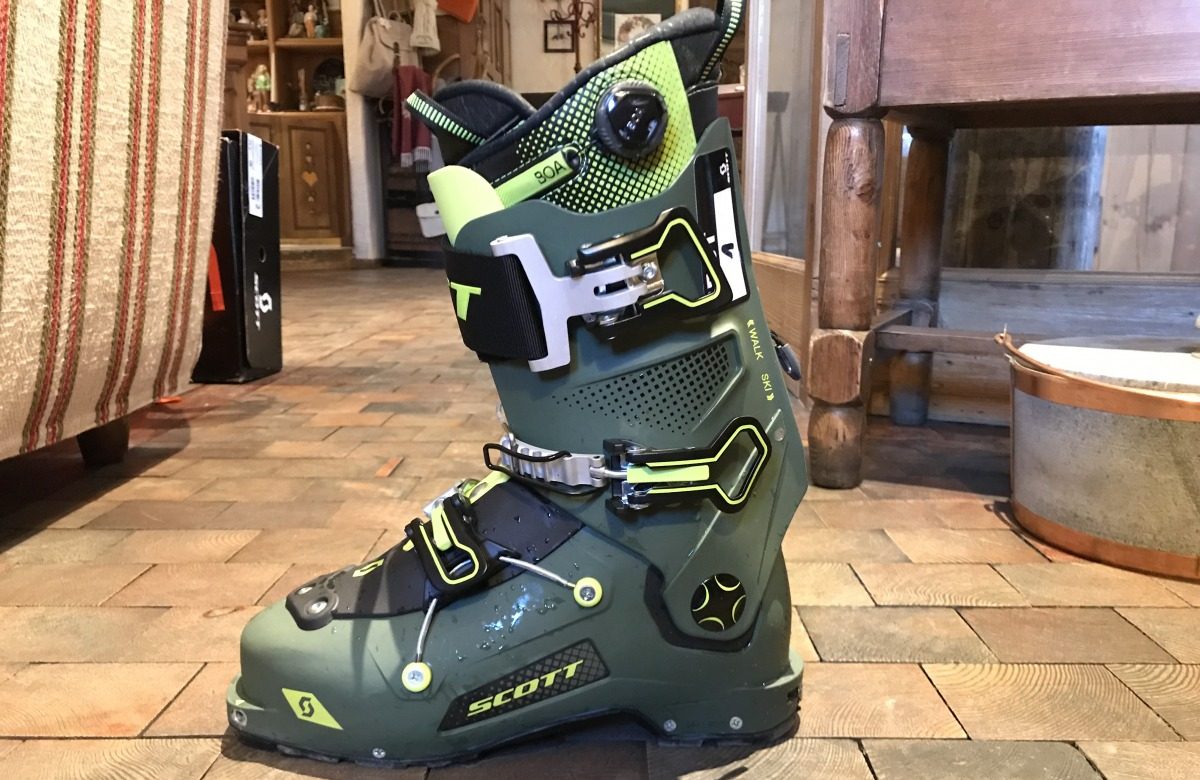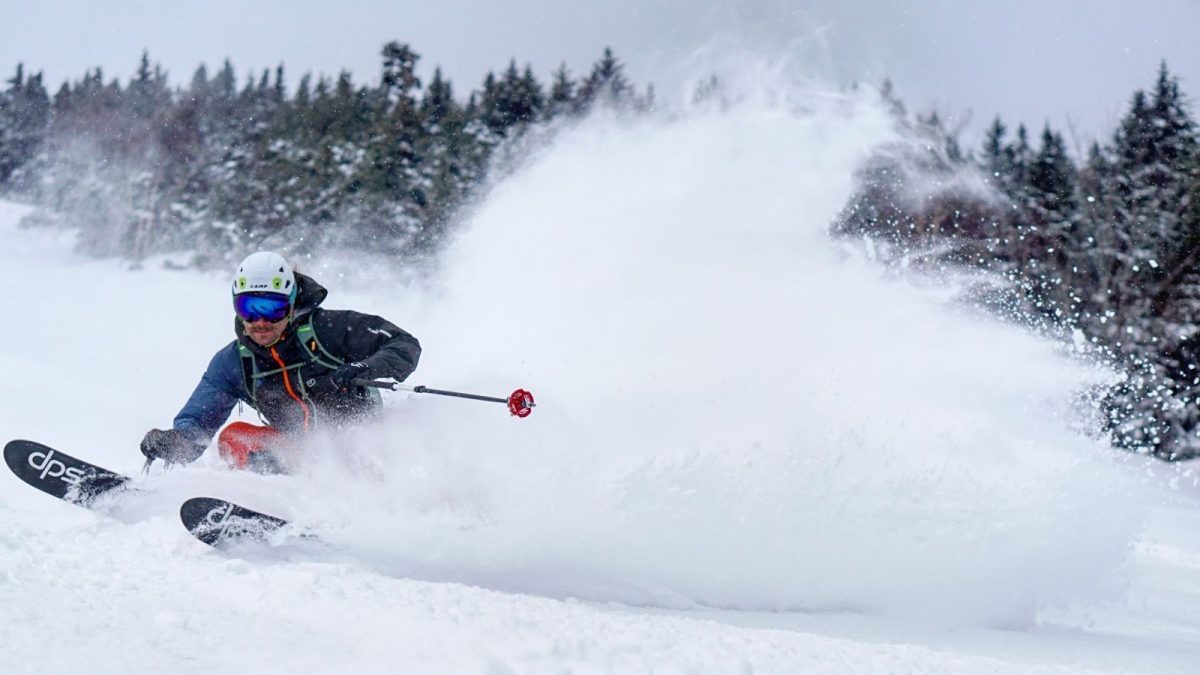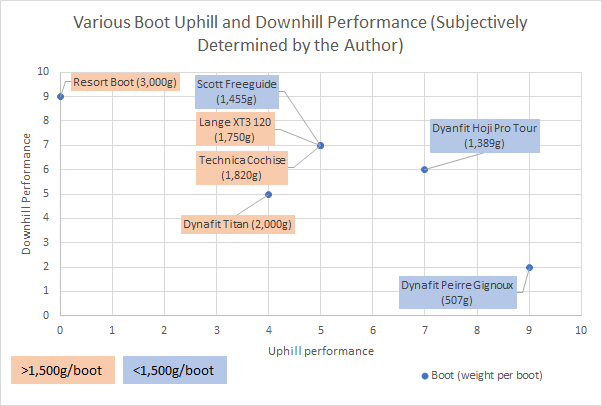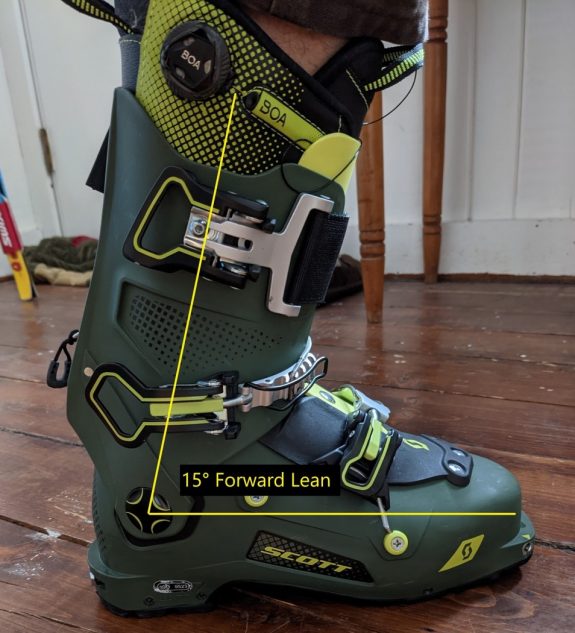Written by Aaron Rice
I’ve come up with a patent pending method to test the skiability of a boot. Step 1. Check the weather and ignore all but the most optimistic forecast then plan accordingly for a two-foot dump! Step 2. Drive to the trailhead with skis that are 124 underfoot and 184 long. Step 3. Realize that it only snowed 3-6 inches and it’s sitting on top of frozen crud. Step 4. See if the boot in question can still drive a massively oversized ski in horrendous conditions!
During the winter months you can find me solely in the backcountry earning my turns. Unlike some new arrivals drawn to the ski touring for uphill fitness, I’ve always been and still am primarily in it for the down. For me the best way to get the best turns is to earn them. I believe in this philosophy so much that in 2016, I spent the year skinning and skiing 2.5 million vertical feet and setting a new record and did so wearing Vulcans on skis 95-124 underfoot! So with that as my background and continuing to ski 300-400 thousand vertical feet each year, I not only need a boot that is going to be the most fun on the down, but also one that’s going to tour like a dream.
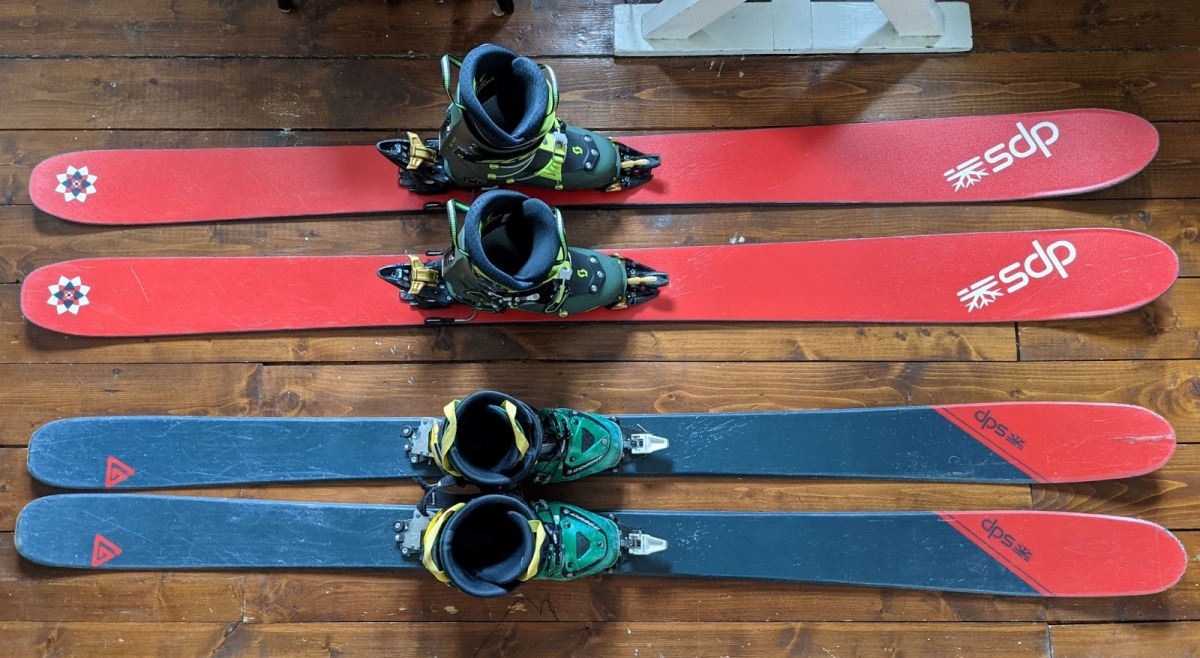
Top: DPS Lotus 124 Pure 3 with Kingpins driven well by Scott Freeguide Carbons even in poor conditions.
Bottom: DPS Cassiar 95 Tour 1 with Dynafit Speedturns and Vulcans — my primary setup during my record breaking year skiing 2.5 million human power feet.
Intended use
Released in 2020, the Scott Freeguide Carbon is Scott’s offering for a freeride touring boot. It is the heaviest and stiffest boot in their touring line at an advertised 1455g (26.5) and 130 flex. The Superguide Carbon and the Cosmos III boots fill out their touring lineup, both a step lighter, softer, and less costly. The Freeguide is made with “Grilamid® mix + carbon fiber” which, best I can tell, is standard Grilamid plastic impregnated with carbon for added stiffness.
The Freeguide is intended to be the “new standard in freetouring” according to the Scott product description. It is a burly boot built to charge on the down but at a low weight for its class. The liner has an integrated boa system and the walkability is achieved with a two-part tongue and an advertised 60° cuff rotation (we will get into that more later).
Fit
Before I talk about fit, a little about my feet. I have a relatively standard arch height and foot width along with a very high instep (thick foot). There are a couple small bone spurs and problem spots, but nothing crazy. I also have very narrow calves. I wear a size 8.5 shoe (26 mondo) but almost always size down for ski boots to a 25.5.
I usually need to get a bit of work done on shells, however the Freeguide fit my foot pretty well right out of the box. I think this is due in large part to the plush liner, which I’m not accustomed to. The toe box was a bit narrow and my pinky toe was constantly being pushed into the rest of my toes. If this were to become my daily driver I would probably need to do some work on the toe box, but never got around to it this season. Otherwise this boot was a generalist when it came to fit, not particularly wide or narrow, and the plush liner allows it to fit a range of feet snuggly.
Comparison
I found that the Freeguide skis very close to a traditional alpine boot. The Grilamid carbon has a nice progressive flex in contrast to the pure carbon shells I’m used to where the stiffness is achieved with a hard wall. As I initiated a turn with the Freeguide, I was able to flex into the front cuff and feel progressively more resistance as I pushed harder. This is in contrast to a boot like the Hoji or even a skimo race boot like the Alien 3.0 in which there is little to no resistance when a turn is initiated and as you flex into the boot all of a sudden you hit the carbon cuff and the flex comes to a complete halt.
The Freeguide is in the same class as the Tecnica Cochise and the Lange XT3. That said, this boots comes in at less than 1500 g putting it in solid weight competition with the Dynafit Hoji Free 130 (or Vulcan) or the Scarpa Maestrale. When compared to the Hoji or Maestrale it was a bit stiffer and had a more progressive flex and overall drove a large ski better. However, on the up the rear cuff rotation and free-ness of the pivot were not as effective as the more touring-focused boots, more on this below. On the other hand, it absolutely blew the XT3 and Cochise out of the water on weight (which is why I even thought to compare it to the Hoji and Maestrale). So with great skiability and great weight, where’s the catch?
With so many advances in touring boot walk mechanisms recently (Atomic Free/ Lock, Dynafit Hoji Lock, Scarpa Speed Lock) the Freeguide relied on the “Integrated rear hook ski/walk mechanism” which feels like older technology. The walk mode mechanism is reminiscent of some of the original walk modes on classic boots like the Dynafit Titan, with the addition of a little string to make pulling it easier. The biggest sign that the Freeguide walk mechanism leaves something to be desired was when I had all of the buckles and straps fully latched for skiing, I could barely tell if the walk mode was on or not. More than once I had to bend down and look at the little symbols to make sure I was in the right mode.
Buckles
The Freeguide skis like a four-buckle boot with a powerstrap, but only has 3 buckles, including the powerstrap. That’s a pretty impressive feat and where a lot of the weight savings come from. So each of these buckles is worth looking at independently.
The bottom buckle is well designed; the addition of cables to spread out the area cinched when the buckle is closed worked well. This buckle secured my foot on the down and I was able to keep it buckled tight on the up with no pain.
The middle buckle is positioned quite high up on the ankle rather than being over the instep. This buckle did a great job holding my foot in place on the down and gave me solid control over the ski. Even on my DPS Lotus 124s I felt like my boot was one with the ski, flying off a soft pillow and the ski tracking along through the air, rather than becoming airborne and feeling the ski tip drop as the boot is overpowered, not something I have felt with many other boots!
However, the design of the walk mode meant if I kept the middle buckle latched on the up, I had a significantly limited backwards range of motion in the rear cuff. So I had to unbuckle the instep buckle for touring. But this meant there wasn’t much holding my foot in place and with each step my whole foot would be pushed slightly towards the front of the boot and my toes would jam. This proved to not be as painful or uncomfortable as expected, but certainly made for some annoyance and didn’t encourage me to take these boots for tours longer than a couple of hours.
The combo power strap/ top buckle provided a tight fit for the down, however on the up I had to undo the velcro each time I transitioned to down. It appears the intent of the upper velcro strap/buckle is to have enough range to just unbuckle it and tour, but this was not even close to the case for me. I could even gain a tad more range of motion by completely removing the strap from the buckle. However, then the strap is floating around and the velcro is flapping in the wind and ripping up the inside of your snow pants, so, not recommended.
The advertised cuff rotation is 60°. However, I found even with unbuckling the middle strap, loosening the powerstrap, and double checking that I was in walk mode, the usable articulation really only had about half of the advertised cuff rotation. What do I mean by usable articulation? With the boot off of my foot and no liner in it, yes there was 60° of cuff rotation. However, with a relatively stiff liner, and high inner rear cuff that actually hit my ankle above where it would naturally bend, I was only able to stride about half of the advertised range. The addition of lots of finicky buckles also decreased range of motion. I was able to gain some extra motion by completely unbuckling the powerstrap and the middle buckle, however that is not how the boot is intended to be used, and it causes the unpleasant *clump, clupm, clunf* of walking with all your boot buckles undone.
Durability
Last year I wrote a review for a different boot, in which I said, “I am always a bit wary of the Boa systems breaking. This didn’t happen, but is always in the back of my mind.” Well, on the Freeguide liners I broke both Boas in a matter of weeks.
Luckily I’ve never been a fan of laces or Boas on liners. I find they restrict range of motion when touring and only add very limited performance gains on the down. To me having to undo and redo a boa or laces on every transition is just never going to be worth the time. Luckily, I had my own mini experiment going for a week or so when I had only one boa broken and could do a foot to foot comparison with and without the Boa. I found very little noticeable difference in the downhill performance of the boot with or without the boa system.
On another note, I am a huge fan of easily replaceable parts. One of the first things to wear out on boot shells is usually the sole and the buckles. The Freeguide makes both easily replaceable. The buckles are attached by simple Phillips-head screws allowing at-home replacement and avoiding trips to the shop to rivet buckles back on — big points for this! The soles are completely replaceable as well, a feature that certainly added a few grams but could double the lifespan of your boots — totally worth it in my opinion! That said when I unscrewed the soles, one of the screws was stripped and looked like it had been screwed into the sole off center. Likely not noticeable or a big issue, but worth noting.
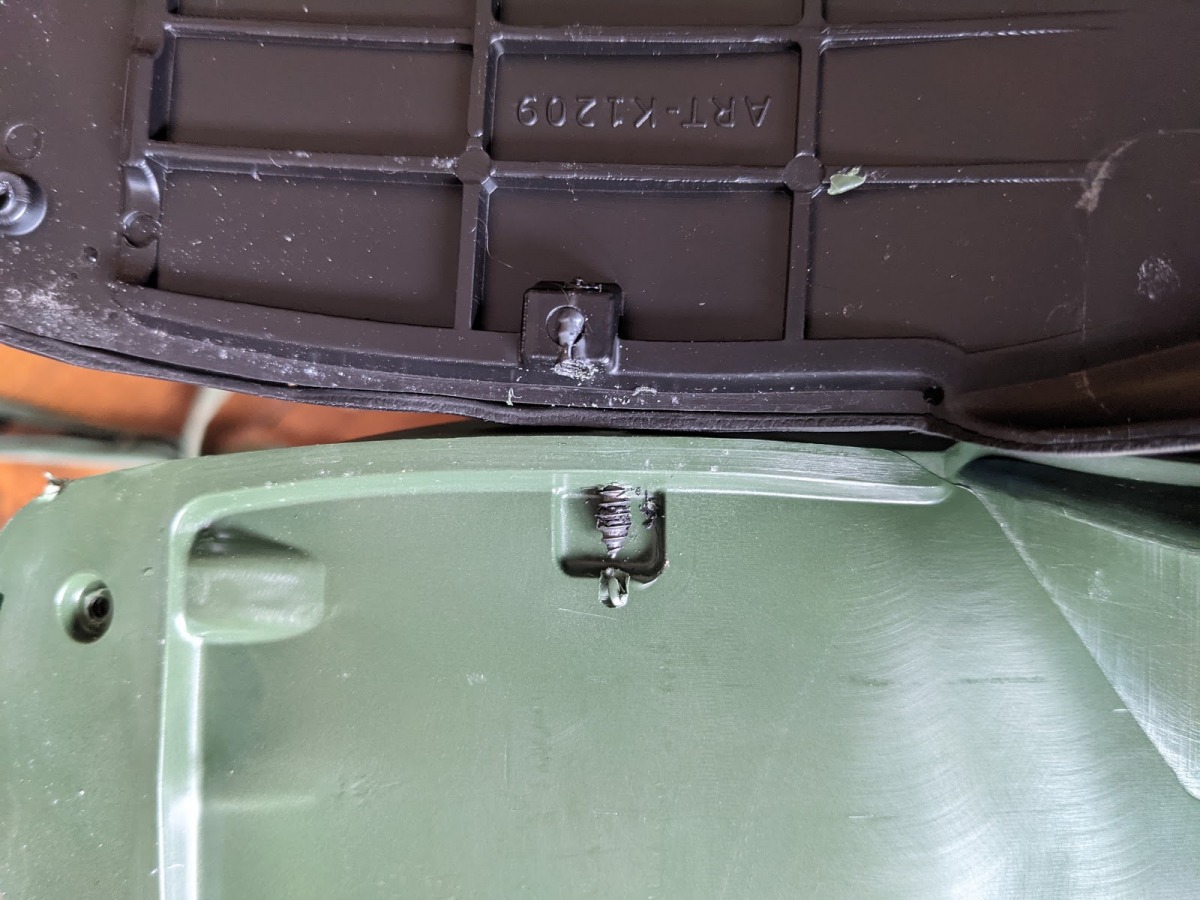
Being able to swap the soles on the Scott Freeguide is a great feature, despite that one of the screws was stripped.
Conclusion
As a high performing, stiff freeride boot that weighs in under 1500g, with a true progressive flex and uphill capabilities, the Freeguide performs above its weight class on the down. The walkability is okay, but it does not live up to the advertised 60 degree cuff rotation due to the liner, buckles, and the design of the inner cuff. For the resort-focused skier looking for a daily driver that can take them into the sidecountry or the big mountain sender not looking to crush vert, this boot could be the ticket.
SPECS
Weight (grams): 1369 g/boot (25.5)
Last: 101
Flex: 130
Forward Lean: 15°-19°
Range of Motion: 30° actual (60° advertised cuff rotation)
Boot construction: Powerfree Carbon (Grilamid+carbon)
Sole construction: Skywalk rubber sole
Buckles: 3 buckles + Boa on liner
Shop for the Scott Freeguide Carbon
Aaron Rice loves skiing so much that in 2016 he skinned and skied 2.5 million human powered vertical feet, breaking the record for most human powered skiing in a calendar year. He now lives in Vermont living a slightly more sane lifestyle but still skis daily, getting about 125 days and 350,000’ per year. Follow along @airandrice!
Beyond our regular guest bloggers who have their own profiles, some of our one-timers end up being categorized under this generic profile. Once they do a few posts, we build a category. In any case, we sure appreciate ALL the WildSnow guest bloggers!

